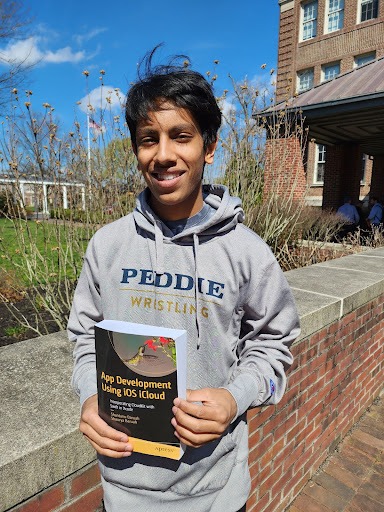Shaurya Baruah ’24 Develops Time Management App and Co-Authors Book to Help Others

Life is hard.
As a middle school student constantly struggling to keep up with deadlines- studying for a plethora of tests while finding time to enjoy with friends- I needed to organize my life. I wanted balance but struggled to find fulfillment in my accomplishments. To find clarity, I began working on my first project: a life organizer.
My father, Shantanu Baruah, the Executive VP for Life Sciences and Healthcare at HCLTech, has always encouraged me to look into programming. Still, it wasn’t until middle school that I discovered a passion for it. In seeking to organize my life, I uncovered many ways computer science could be utilized to resolve my dilemma. My introduction began not through your typical Java or Python but through Swift, an open-source programming language developed by Apple Inc. for multi-paradigm application development.
The need to create an app to solve time management issues and student work schedules became more apparent during COVID-19, when I was in my last year of middle school. I utilized the skills I learned from my father to put together an app named Tracking Genie (available in the App Store), which allows users to create tasks, group tasks into manageable lists, add phone numbers, email addresses and URLs that link to communication/information access, and share lists with other students.
After completing the project, I was excited to share my newfound knowledge with others. After a discussion with my father, we decided to channel what I learned into co-authoring a book that could be shared with other developers interested in learning Swift & the iCloud toolkit- providing a guide to users who wanted to leverage the iCloud Kit in their iPhone apps.
Every week, brainstorming ideas and discussing chapters, we planned the structure of the book. While drafting the book, we realized that there wasn’t much documentation available online about iCloudKit, the key feature the book anchored upon. Concepts like sharing content among app users securely and safely, or integrating content shared across other community apps, were completely unavailable. A lot of the content we produced came from experimentation with different syntaxes and methods, trial and error, to ultimately build the code into a fully functional app. I enjoyed this stage of the project, producing new content that wasn’t readily available to the public.
Rather than simply teaching the concepts, “App Development Using iOS iCloud: Incorporating CloudKit with Swift in Xcode” provides readers with a practical guide on how to construct a professional app from scratch. Intermediate users who want to learn advanced concepts about Swift and the utilization of iCloudKit can use the book as a practical guide to learning about concepts, from UI-design to sharing data among users. Users can then apply what they learned to further develop their skills through trial and error.
While the publishing process was longer than I anticipated (about a year in total), it was rewarding to apply my skills from a variety of disciplines to produce an end project. In 2023, Apress, recognized as a leading tech publisher, published “App Development Using iOS iCloud: Incorporating CloudKit with Swift in Xcode.” I am grateful for this development as it introduced me to the writing process and helped me develop project management skills that I have employed in other engagements at The Peddie School, including Academic Advancements, a non-profit organization I co-run that supports the education of underprivileged students across the globe.
For anyone who has a similar goal or project, I recommend that you believe in and pursue your idea. Return to your purpose in moments of hesitation or doubt. It will always be a fulfilling experience.
“App Development Using iOS iCloud: Incorporating CloudKit with Swift in Xcode” is available on Amazon and Barnes & Noble.